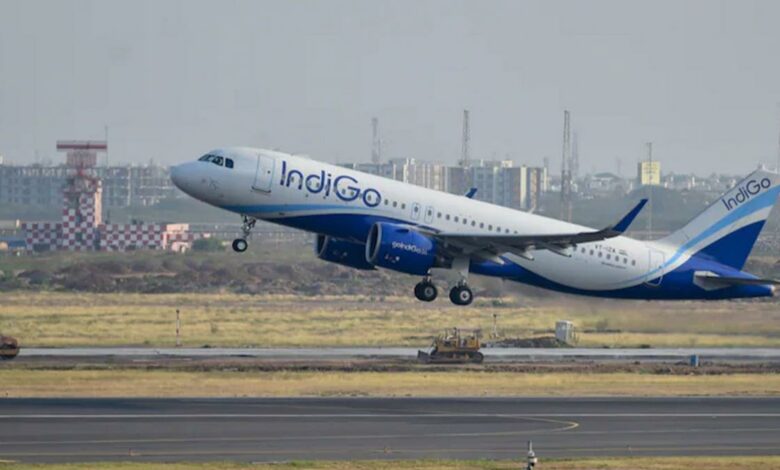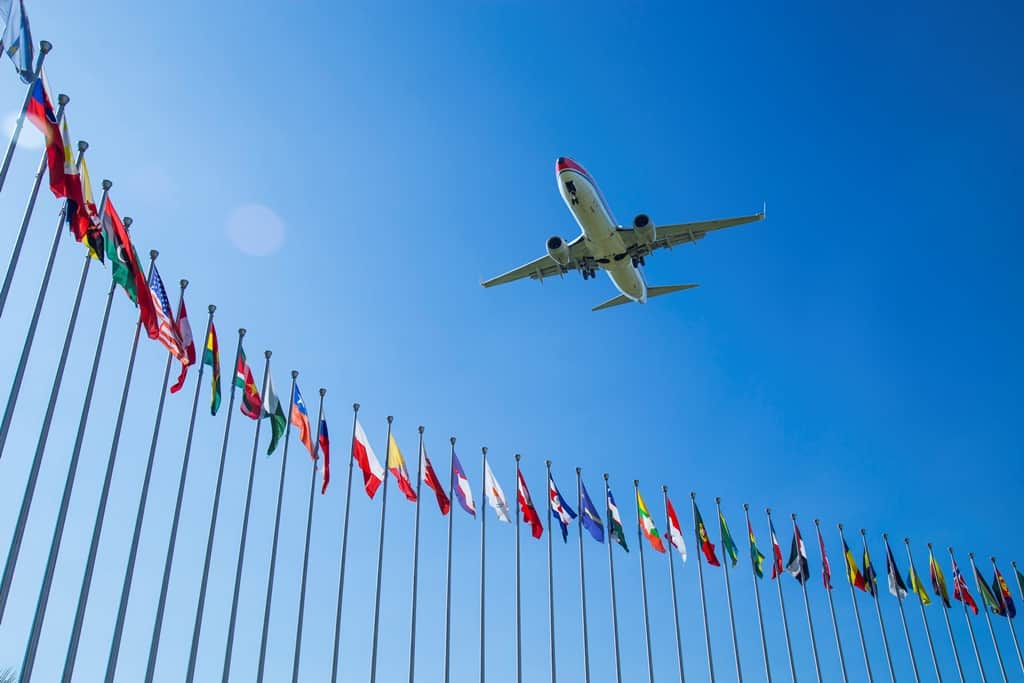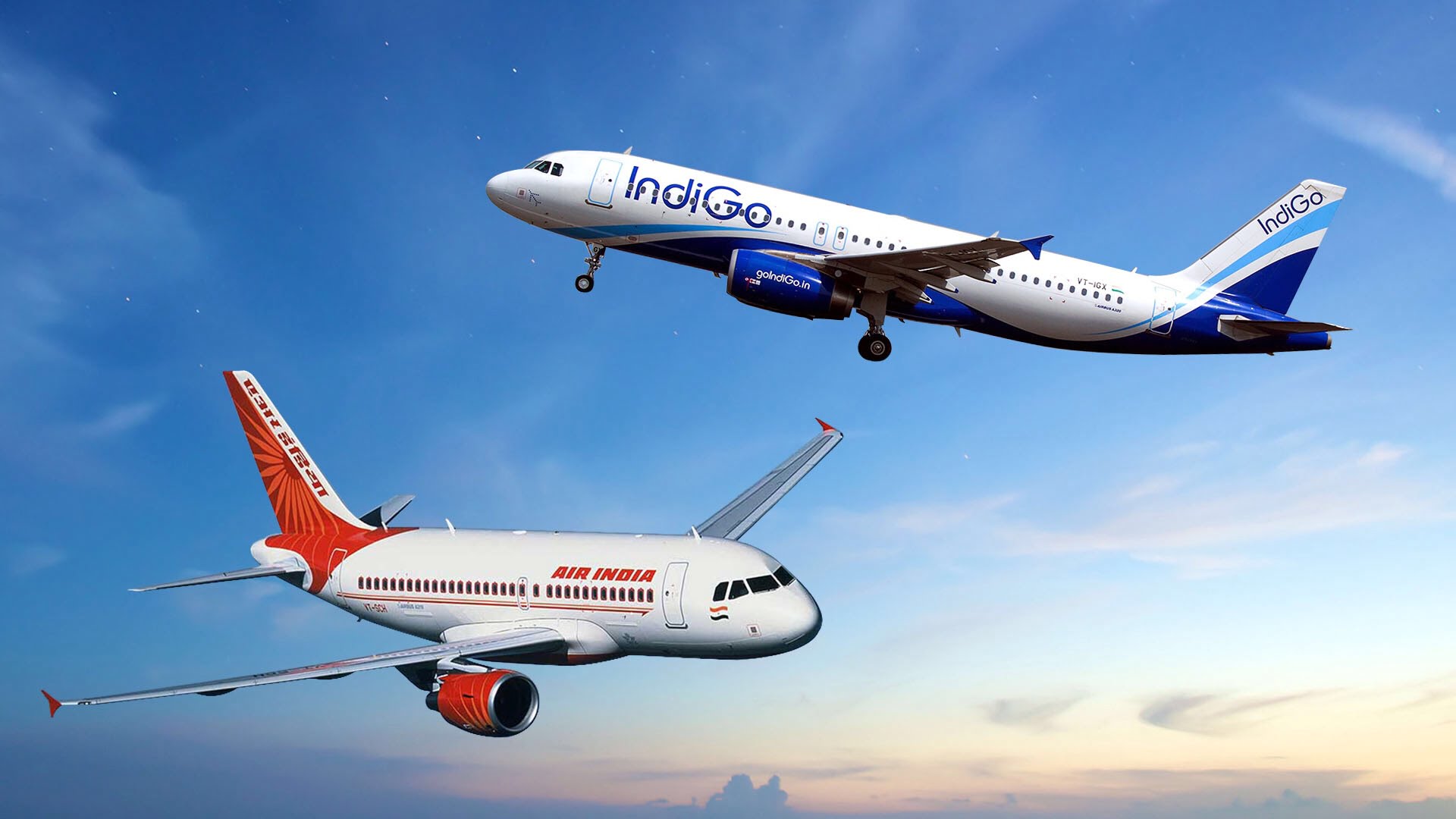Indigo & AirIndia world two most unsafe Airlines, Both belongs to India

Indigo & AirIndia world two most unsafe Airlines, Both belongs to India
Insult to aviation industry of India! India’s two most unsafe airlines, Indigo and AirIndia, will be allowed to fly as long as they meet new safety standards. The only two airlines in the world that don’t meet the International Civil Aviation Organization (ICAO) safety standards will be given exemptions by the Indian government. The ruling came after a recent audit found that both airlines failed to meet international safety standards.
The audits have revealed that both AirIndia and Indigo have a poor safety records. The airplanes didn’t have live or functioning black box recorders, the aircraft maintenance logs were incomplete and the airlines weren’t complying with safety rules related to training of crew. There were also issues related to the maintenance of international cargo flights by both AirIndia and IndiGo.
The aviation industry in India is the third largest in Asia and ninth largest in the world, with over 19 million passengers carried annually. The Indian government has been working to develop its civil aviation industry by ensuring that all aircraft are “airworthy.” There have been attempts to introduce a Bill on air safety but the government has not done so. A draft of Air Safety Bill, which is being put together by the Directorate General of Civil Aviation (DGCA), has proposed stringent rules for airlines to follow and hefty penalties for those who are unable or unwilling to comply with the new rules.
IndiGo and Air India are the two airlines that have failed to meet ICAO safety standards. Both these airlines operate worldwide as Indian carriers, but their head offices are located in Gurgaon and Mumbai, respectively. The Civil Aviation Ministry can now allows them to fly.
Air India has been on the ropes for some time now and the national carrier is making all-out efforts to survive on a day-to-day basis. Air India has been flying with an “air-ambulatory” safety mechanism, an alternative mode of operations where the government’s technical arm decides when and where the airline can fly.
Air India, one of world’s largest airlines, halts flights as pilots dispute
Shift in time zones is causing “flight disruption” in India
Air India has suspended operations at five airports across the country due to a shortage of pilots. The Central Industrial Security Forces (CISF) have been drafted in to take over at least four airports that include the Delhi airport, Mumbai airport, Hyderabad airport and the Chaudhary Charan Singh International Airport in Lucknow.
Air India has been working to develop its own fleet of ATR aircraft. It has already placed orders for 40 such planes from the European plane maker and will have them in the near future. The company also plans to have a fleet of 50 Airbus A320 aircraft in the future.
Air India has been inducting the Boeing 787 aircraft into its fleet, the company will get the remainder of its order. The airline is also expected to introduce nine Airbus A330-300s in mid-2010. The airline is currently operating six Boeing 777-200ER and four Boeing 777-200LR aircraft.
Indigo has placed an order for an additional 25 Airbus A320 aircraft to join its existing fleet of 43 jets. The airline will have a fleet of 49 Airbus A320 aircraft by mid-2010. The airline has also placed an order for 20 Boeing 737 aircraft. Indigo successfully placed an order for 100-plus single aisle and twin aisle aircraft from Airbus, Boeing and Bombardier. It will be the first Indian carrier to receive these planes when they come into service by 2012.
India’s Supreme Court decides to reopen investigation into the crash of over 200 people on board a Garuda Indonesian flight near the Andamans. The Court has asked the National Investigation Agency (NIA) to seek technical help from the manufacturer of a two-stage safety feature called “FDPS,” which was installed on board the aircraft and was not certified by Indonesia.
Both airlines today refused to comment on the news.
“It is a matter of concern if these two carriers, who have no experience of international operations and are operating in India, will now be allowed to fly,” says a senior air safety official. The government audit report stated that both airlines did not meet the safety criteria set by ICAO.
Indigo and AirIndia to Get Exemption From Safety Standards After Complying With New Norms
Indigo, India’s largest domestic carrier, is in talks with the government to get an exemption from safety standards since the airline has submitted a plan stating that it is developing a new type of system for recording cockpit voice recordings (CVR), which will help in making them more efficient. The Indian government has promised to make a final decision on the exemption once Indigo gets its CVR ready.
What is the ICAO?
ICAO is an “International organization that sets international standards and regulations for aircraft and airport operations.” It was founded in 1944 as a treaty organization. Today, it has 189 member states, about half of which are in Europe.
How does the ICAO rate airlines?
The ICAO rates airlines on their safety standards. It is a peer review system where safety inspectors from other member countries visit an airline’s country and assess the airline’s safety. If a country has multiple airlines but only one or two meet international safety standards, then it will not allow the others to fly. This is known as a Significant Safety Concern category.
On December 5, 2017 Indigo Airlines flight carried a live bomb as cargo during one of its international flights from Mumbai to Patna. Indigo representatives insisted that the explosive device was not a “suspect package” and was “safe.” The Directorate General of Civil Aviation (DGCA) said that no passengers were on board when the bomb was found to be live.
In January 2012 an aircraft of Indigo flight 6E-416 from Delhi to Kochi had a planned technical landing in Mangalore. During the approach, the pilot reported problems with his landing gear. The plane was able to land safely on runway 04 with no injuries or malfunctions.
Why Indigo & AirIndia are unsafe?
Both airlines have a history of fatal accidents. In November, 2011 Air India Flight 965 was flying from Mangalore to Thiruvananthapuram. On the climb out from Mangalore, an engine blew up and sucked the plane into an aerodynamic stall. The aircraft struck a water tank of a nearby oil refinery causing damage to the fuselage, causing numerous casualties and fires.
In October, 2009 flight AI 683 from Delhi to Chennai was climbing out of Delhi when the aircraft struck high-altitude turbulence. The pilot had been cleared to initiate an emergency descent, but returned to the airway and continued flight despite severe turbulence. Soon afterwards, the flight crashed into a residential area of Chennai killing 154 people and prompting changes in airport operations in India.
Indigo flight 684 from Kochi to Mumbai had a fatal crash on January 14, 2012. The crash occurred between the towns of Kannur and Kozhikode in Kerala. All 68 passengers and three crew members died when the plane crashed for reasons that were yet unknown by the authorities.
The audit report issued by DGCA on June 12 was the second in less than two years. The first was conducted in May 2016 by the Directorate General of Civil Aviation (DGCA), which found IndiGo and Air India to be failing in terms of operational safe operations, maintenance of aircraft, training, and documentation.
A recent audit report by the Directorate General of Civil Aviation (DGCA) placed IndiGo, Air India and seven foreign carriers on the country’s blacklist. In addition to the airlines failing to meet international safety standards, DGCA placed 22 aircraft on an operating list “for not complying with maintenance requirements.” The blacklist includes 11 aircraft operated by foreign carriers including Air Berlin, Azerbaijan Airlines, Iran Aseman Airlines, Kuwait Airways, Pegasus Airways and Ukraine International Airlines.
Air India has been under the radar for quite some time. Here’s a quick rundown of some of the deadliest flying mishaps in recent memory: In January 2018, Air India Flight AI-752 had an emergency landing at Delhi after its pilots reported about a fuel leak. 66 passengers were killed and eight were injured. Following this incident a meeting was convened between DGCA’s aviation safety committee and the ministry of civil aviation to discuss the safety standards within Indian airlines industry.
In December 2017, India’s second largest carrier by market share, Air India was at risk of having its license revoked after it lost its operating certificate because of the failure to meet prescribed safety standards. The aviation regulator was also in the process of blacklisting the airline. In May 2018, Air India has been blacklisted by DGCA.




